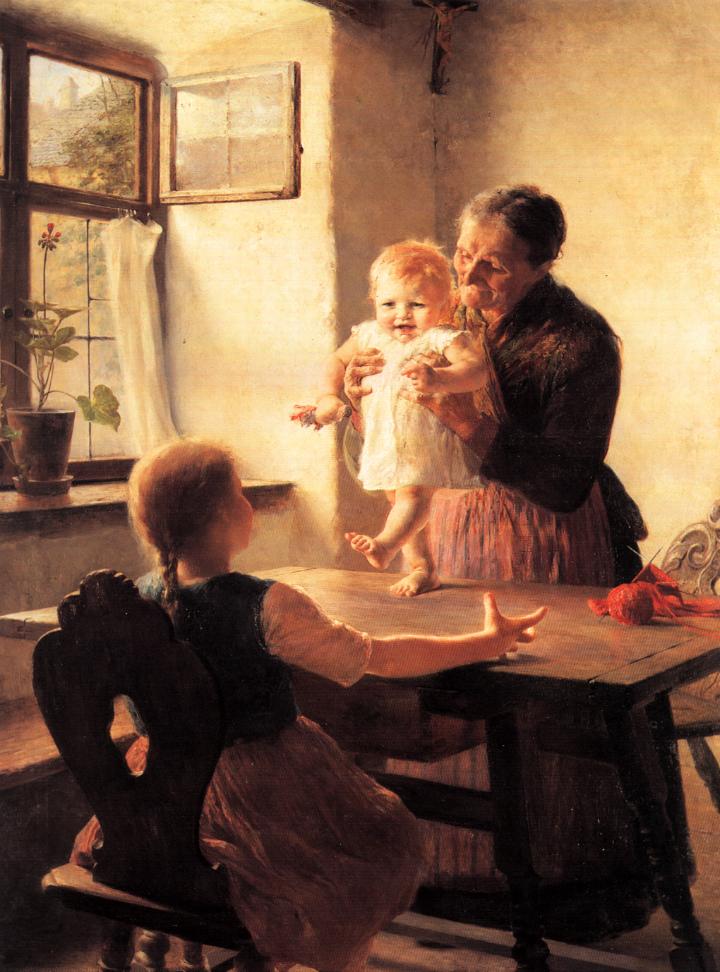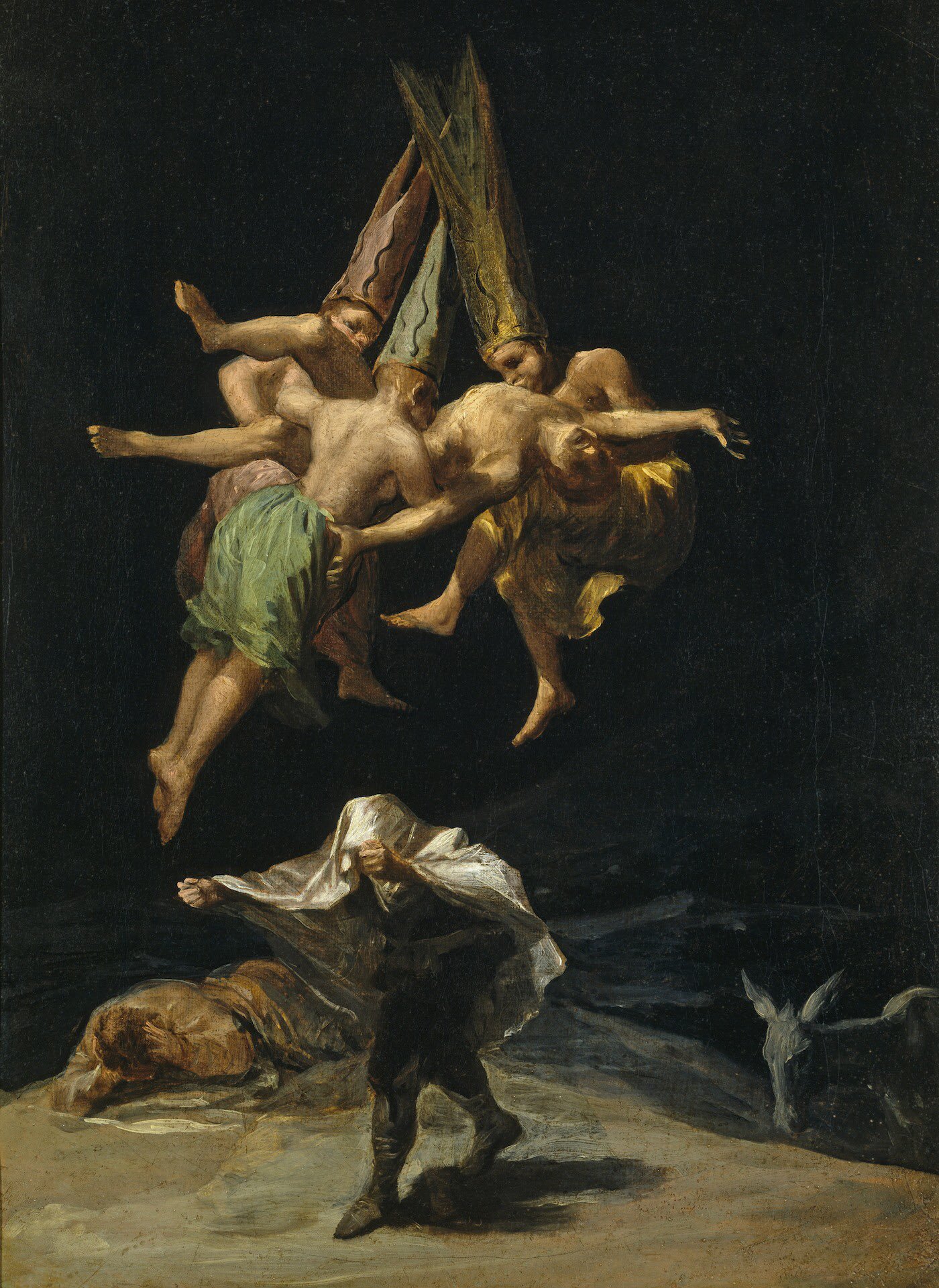|
I've Got Your Nose
I've got your nose is a children's game in which a person pretends to pluck the nose from the face of a baby or toddler. Description The first person forms a fist, and puts the knuckles of the index and middle fingers on either side of a child's nose.Haws, IleenNothin' 2 Do 2008. p.46. The fist is then withdrawn from the child's face with the thumb of the 'thief' protruding between the index and middle fingers; the thumb represents the stolen nose. This motion is often accompanied by an exclamation such as, "I've got your nose!" The child may chase the nose thief to retrieve their nose or may retaliate by stealing the first person's (or someone else's) nose. The 'nose' may then be replaced by pressing the thumb to the child's nose and withdrawing the hand, showing the child that the taker no longer possesses the child's nose. Characteristics This game is commonly played between children, as well as between adults (e.g. parents, grandparents, uncles) and their young relatives. Yo ... [...More Info...] [...Related Items...] OR: [Wikipedia] [Google] [Baidu] |
Gesture Fist With Thumb Through Fingers
A gesture is a form of non-verbal communication or non-vocal communication in which visible bodily actions communicate particular messages, either in place of, or in conjunction with, speech. Gestures include movement of the hands, face, or other parts of the body. Gestures differ from physical non-verbal communication that does not communicate specific messages, such as purely expressive displays, proxemics, or displays of joint attention.Kendon, Adam. (2004) ''Gesture: Visible Action as Utterance''. Cambridge: Cambridge University Press. Gestures allow individuals to communicate a variety of feelings and thoughts, from contempt and hostility to approval and affection, often together with body language in addition to words when they speak. Gesticulation and speech work independently of each other, but join to provide emphasis and meaning. Gesture processing takes place in areas of the brain such as Broca's and Wernicke's areas, which are used by speech and sign language. In ... [...More Info...] [...Related Items...] OR: [Wikipedia] [Google] [Baidu] |
Children's Game
This is a list of games that used to be played by children, some of which are still being played today. Traditional children's games do not include commercial products such as board games but do include games which require props such as hopscotch or marbles (toys go in List of toys unless the toys are used in multiple games or the single game played is named after the toy; thus "jump rope" is a game, while " Jacob's ladder" is a toy). Despite being transmitted primarily through word of mouth due to not being considered suitable for academic study or adult attention, traditional games have, "not only failed to disappear but have also evolved over time into new versions." Traditional children's games are defined, "as those that are played informally with minimal equipment, that children learn by example from other children, and that can be played without reference to written rules. These games are usually played by children between the ages of 7 and 12, with some latitude on both ... [...More Info...] [...Related Items...] OR: [Wikipedia] [Google] [Baidu] |
Human Nose
The human nose is the most protruding part of the face. It bears the nostrils and is the first organ of the respiratory system. It is also the principal organ in the olfactory system. The shape of the nose is determined by the nasal bones and the nasal cartilages, including the nasal septum which separates the nostrils and divides the nasal cavity into two. On average the nose of a male is larger than that of a female. The nose has an important function in breathing. The nasal mucosa lining the nasal cavity and the paranasal sinuses carries out the necessary conditioning of inhaled air by warming and moistening it. Nasal conchae, shell-like bones in the walls of the cavities, play a major part in this process. Filtering of the air by nasal hair in the nostrils prevents large particles from entering the lungs. Sneezing is a reflex to expel unwanted particles from the nose that irritate the mucosal lining. Sneezing can transmit infections, because aerosols are c ... [...More Info...] [...Related Items...] OR: [Wikipedia] [Google] [Baidu] |
Infant
An infant or baby is the very young offspring of human beings. ''Infant'' (from the Latin word ''infans'', meaning 'unable to speak' or 'speechless') is a formal or specialised synonym for the common term ''baby''. The terms may also be used to refer to juveniles of other organisms. A newborn is, in colloquial use, an infant who is only hours, days, or up to one month old. In medical contexts, a newborn or neonate (from Latin, ''neonatus'', newborn) is an infant in the first 28 days after birth; the term applies to premature, full term, and postmature infants. Before birth, the offspring is called a fetus. The term ''infant'' is typically applied to very young children under one year of age; however, definitions may vary and may include children up to two years of age. When a human child learns to walk, they are called a toddler instead. Other uses In British English, an '' infant school'' is for children aged between four and seven. As a legal term, ''infancy'' is mor ... [...More Info...] [...Related Items...] OR: [Wikipedia] [Google] [Baidu] |
Toddler
A toddler is a child approximately 12 to 36 months old, though definitions vary. The toddler years are a time of great cognitive, emotional and social development. The word is derived from "to toddle", which means to walk unsteadily, like a child of this age. Developmental milestones Toddler development can be broken down into a number of interrelated areas. There is reasonable consensus about what these areas may include: * Physical: growth or an increase in size. * Gross motor: the control of large muscles which enable walking, running, jumping and climbing. * Fine motor: the ability to control small muscles; enabling the toddler to feed themselves, draw and manipulate objects. * Vision: the ability to see near and far and interpret what is seen. * Hearing and speech: the ability to hear and receive information and listen ( interpret), and the ability to understand and learn language and use it to communicate effectively. * Social: the ability to interact with the world thro ... [...More Info...] [...Related Items...] OR: [Wikipedia] [Google] [Baidu] |
Timothy R
Timothy is a masculine name. It comes from the Greek name ( Timόtheos) meaning "honouring God", "in God's honour", or "honoured by God". Timothy (and its variations) is a common name in several countries. People Given name * Timothy (given name), including a list of people with the name * Tim (given name) * Timmy * Timo * Timotheus * Timothée Surname * Christopher Timothy (born 1940), Welsh actor. * Miriam Timothy (1879–1950), British harpist. * Nick Timothy (born 1980), British political adviser. Mononym * Saint Timothy, a companion and co-worker of Paul the Apostle * Timothy I (Nestorian patriarch) Education * Timothy Christian School (Illinois), a school system in Elmhurst, Illinois * Timothy Christian School (New Jersey), a school in Piscataway, New Jersey Arts and entertainment * "Timothy" (song), a 1970 song by The Buoys * '' Timothy Goes to School'', a Canadian-Chinese children's animated series * ''Timothy'' (TV film), a 2014 Australian televis ... [...More Info...] [...Related Items...] OR: [Wikipedia] [Google] [Baidu] |
English-speaking World
Speakers of English are also known as Anglophones, and the countries where English is natively spoken by the majority of the population are termed the ''Anglosphere''. Over two billion people speak English , making English the largest language by number of speakers, and the third largest language by number of native speakers. England and the Scottish Lowlands, countries of the United Kingdom, are the birthplace of the English language, and the modern form of the language has been being spread around the world since the 17th century, first by the worldwide influence of England and later the United Kingdom, and then by that of the United States. Through all types of printed and electronic media of these countries, English has become the leading language of international discourse and the lingua franca in many regions and professional contexts such as science, navigation and law. The United Kingdom remains the largest English-speaking country in Europe. The United St ... [...More Info...] [...Related Items...] OR: [Wikipedia] [Google] [Baidu] |
Fig Sign
The fig sign is a mildly obscene gesture used at least since the Roman Age in Italy, Southern Europe, parts of the Mediterranean region, including in Turkish culture, and has also been adopted by Slavic cultures and South Africa. The gesture uses a thumb wedged in between two fingers. This gesture is most commonly used to ward off the evil eye, insult someone, or deny a request. It is also used more innocuously in Northwestern Europe and countries such as the UK, US, Canada, Australia, The Netherlands and Czech Republic to pretend taking the nose off a child. Because of its origins in Southern Europe or Latin Europe, the gesture was imported to Latin America. In ancient Rome, the fig sign, or , was made by the to ward off the evil spirits of the dead as a part of the Lemuria ritual. The hand gesture may have originated in ancient Indian culture to depict the lingam and yoni. Among early Christians, it was known as the , or 'obscene hand'. The letter "T" in the America ... [...More Info...] [...Related Items...] OR: [Wikipedia] [Google] [Baidu] |
Children's Games
This is a list of games that used to be played by children, some of which are still being played today. Traditional children's games do not include commercial products such as board games but do include games which require props such as hopscotch or marbles (toys go in List of toys unless the toys are used in multiple games or the single game played is named after the toy; thus "jump rope" is a game, while " Jacob's ladder" is a toy). Despite being transmitted primarily through word of mouth due to not being considered suitable for academic study or adult attention, traditional games have, "not only failed to disappear but have also evolved over time into new versions." Traditional children's games are defined, "as those that are played informally with minimal equipment, that children learn by example from other children, and that can be played without reference to written rules. These games are usually played by children between the ages of 7 and 12, with some latitude on both ... [...More Info...] [...Related Items...] OR: [Wikipedia] [Google] [Baidu] |
Hand Games
Hand games are games played using only the hands of the players. Hand games exist in a variety of cultures internationally, and are of interest to academic studies in ethnomusicology and music education. Hand games are used to teach music literacy skills and socio-emotional learning in elementary music classrooms internationally. Examples of hand games * Chopsticks (sticks) * Clapping games * Mercy * Morra (finger counting) * Odds and evens * Pat-a-cake and variations: ** Mary Mack * Red hands (or hand-slap game) * Rock paper scissors * Thumb war (or thumb wrestling) * " Where are your keys?" (language acquisition game) Less strictly, the following may be considered hand games: * Bloody knuckles * Fingers (drinking game) * Jacks * Knife game * Spellbinder * Stick gambling * String games, such as cat's cradle Cat's cradle is a game involving the creation of various string figures between the fingers, either individually or by passing a loop of string back and for ... [...More Info...] [...Related Items...] OR: [Wikipedia] [Google] [Baidu] |






%2C_Japanese_rock-paper-scissors_variant%2C_from_the_Kensarae_sumai_zue_(1809).jpg)